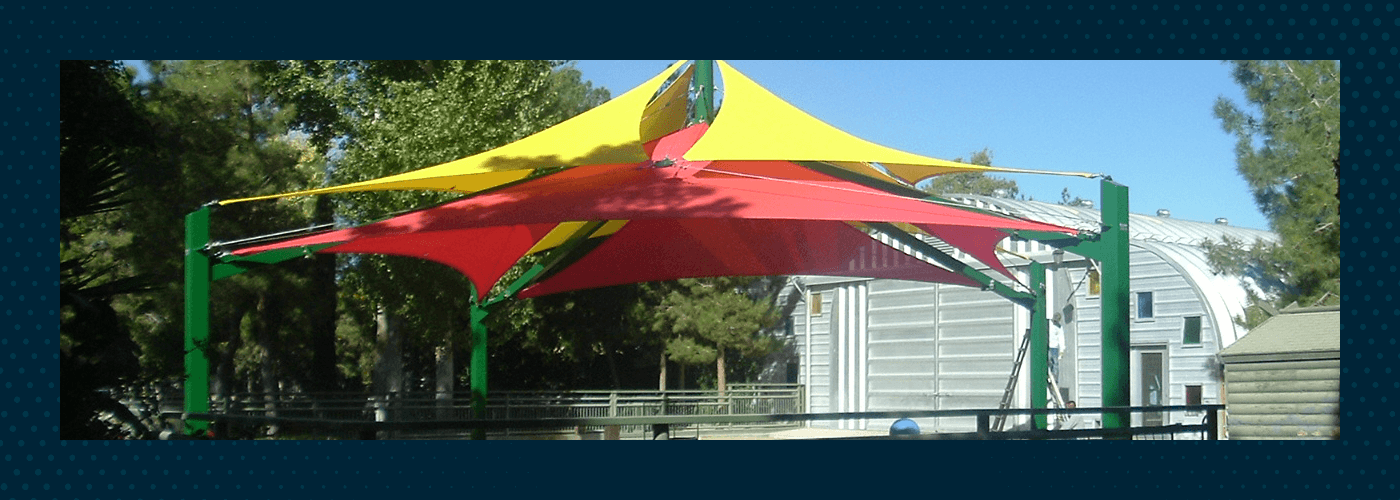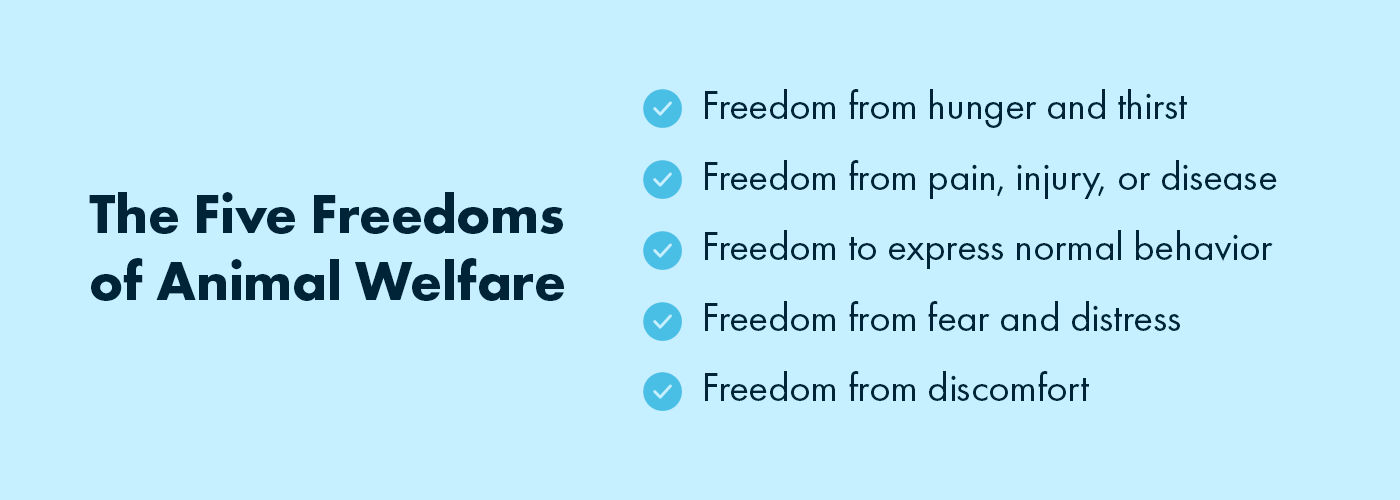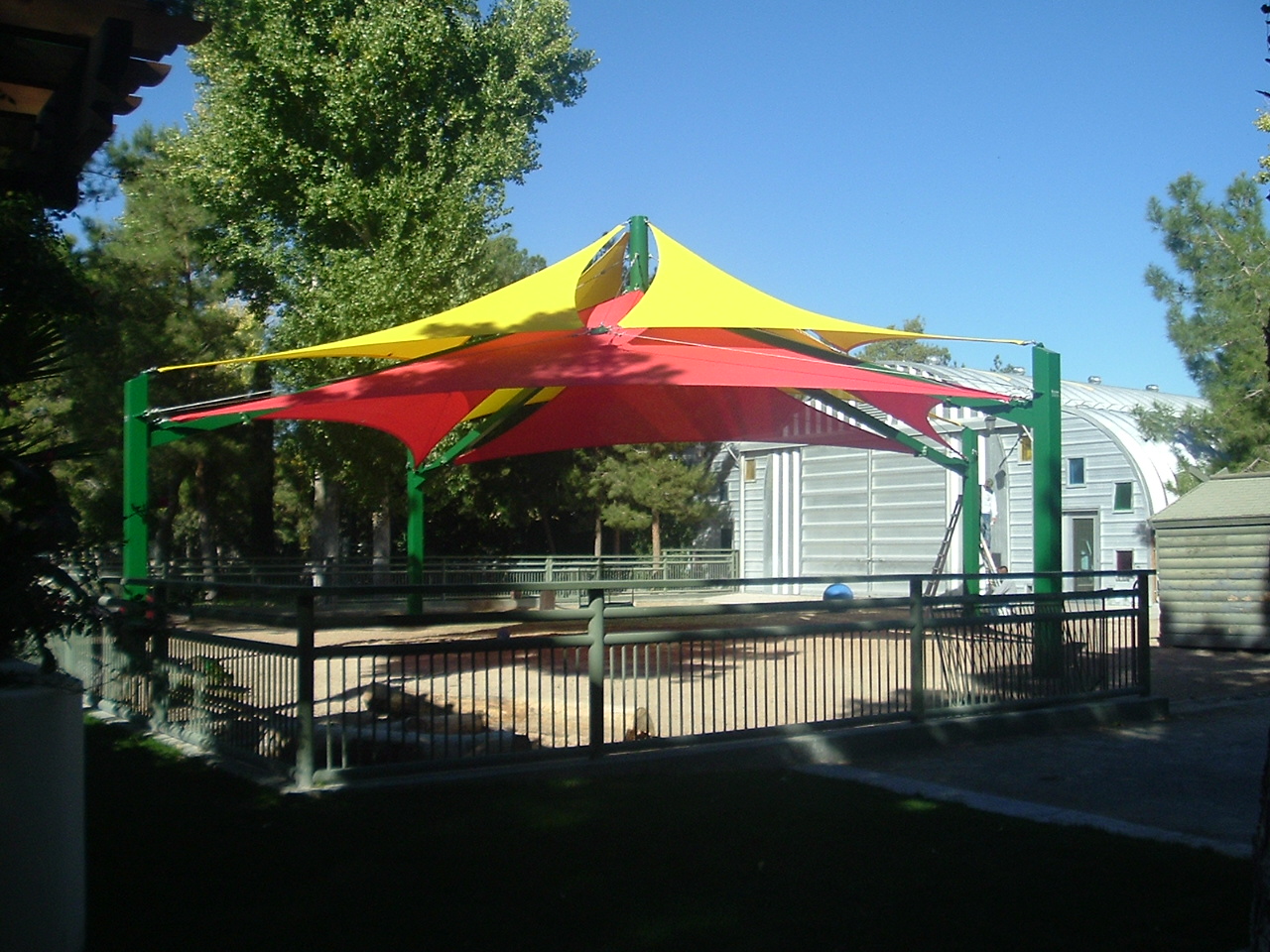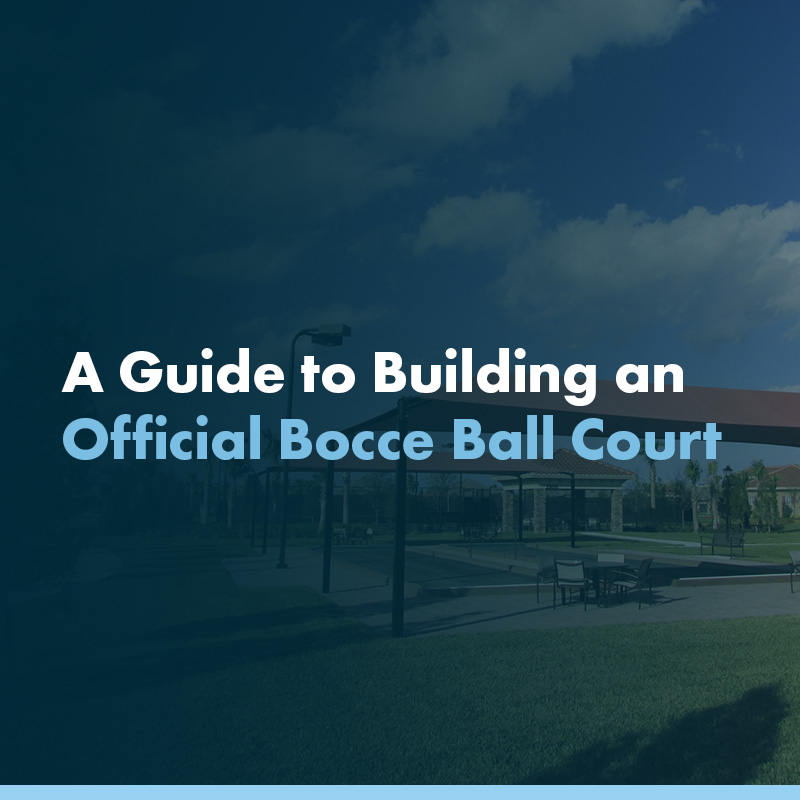
Working with animals in any capacity, from farming to rescue, can be challenging. Your organization has many boxes to tick to ensure its animals only receive the best possible care. Commercial enterprises may face severe consequences if they fail to meet proper animal care standards, which include investing in shelter from the elements.
Creating a comfortable and healthy area for animals is often overlooked, but many animal welfare standards require them to have access to shelter. When a business has many animals, it can be challenging to fulfill this need, and shade structures can provide an effective solution. When designed and installed by experienced professionals, they offer durability, resilience and safety for livestock and other animals. Understanding the relevant standards is the first step to installing a structure that enhances operations.
Understanding Livestock Welfare Standards
A massive 80% of organic consumers say that animal welfare is essential when considering whether to purchase animal products. Therefore, understanding livestock welfare standards is critical to maintaining profitability. These standards provide an excellent benchmark for meeting consumer demands and doing the right thing for the animals.

Some prevalent livestock welfare standards include:
- American Society for the Prevention of Cruelty to Animals (ASPCA) standards: The ASPCA offers independent animal welfare certifications that require humane practices and on-farm audits. Their certifications require businesses to meet several requirements to prove to consumers that they raise animals humanely. In some states, certification also opens the door to federal and state funding.
- The Animal Welfare Act (AWA): The AWA was signed into law in 1966. It regulates the treatment of animals in commercial, research and testing environments, covering many aspects of their humane care, including access to shelter from the elements and adequate ventilation.
- The United States Department of Agriculture (USDA) animal welfare requirements: In 2023, the USDA released new standards that require animals to have year-round outdoor access. These standards also state that animal shelters must allow livestock to turn around, lie down and stand up.
- American Humane standards: American Humane Certified™ Animal Welfare standards are based on robust scientific research. They are species-specific and cover everything from air and water quality to shade and ventilation. The guidelines for livestock, including sheep, goats, cattle and poultry, include proper shade and protection from direct sunlight.
- State animal welfare requirements: Each state has different laws to maintain animal welfare on farms and other commercial properties. These laws vary considerably by state, but many basic requirements, such as access to food, water and shelter, are the same.
- Species-specific standards: Your business may need to understand the standards related to its specific livestock. Most require businesses to provide shelter from the elements, but the dimensions may vary depending on the species.
Animal welfare standards continue to evolve as we learn more about what animals need to live contented lives. Ongoing education can be highly beneficial in helping your business understand the specific needs of the animals in its care. Keeping abreast of changes in standards and other animal welfare best practices helps your business maintain compliance and take a proactive and humane stance on animal welfare.

The Five Freedoms of Animal Welfare
The ASPCA lays out five basic standards to ensure animal welfare. They include physical and mental well-being and cover pets and livestock. The five freedoms of animal welfare include:
- Freedom from hunger and thirst: Animals need access to fresh water and a suitable diet to meet their health needs.
- Freedom from pain, injury, or disease: Animals require access to veterinary care to ensure rapid diagnoses and treatment, and animal owners should take preventive measures to prevent health issues.
- Freedom to express normal behavior: Animals need enough space and facilities to enjoy normal behaviors. They should also have other members of their own species for company.
- Freedom from fear and distress: Animals must have access to conditions and treatment that prevent their mental suffering.
- Freedom from discomfort: Animals require an appropriate living environment, including a comfortable resting area and shelter from the elements.
Prioritizing animal welfare enhances the animals’ quality of life and fosters public trust in your business practices, leading to stronger community relationships and local support.
The Role of Shade Structures in Meeting Farm Animal Welfare Requirements
Shade structures provide livestock with freedom from discomfort. In high temperatures or arid climates, many animals need shelter to reduce the risk of heat stress. Shelter makes animals more comfortable, and it also means they will expend less energy on temperature regulation and other aspects of survival. The less energy they use on these things, the more they can use to thrive in their environment.
Erecting these structures also benefits your organization. As more consumers pay attention to where their animal products come from, meeting livestock welfare needs is becoming more critical for your business’s reputation and profits. It also ensures that your business complies with relevant industry standards. With new USDA standards requiring additional outdoor space for some species and animal enrichments, providing these animals with shade and comfort outdoors is crucial.
Why Provide Shade for Livestock?
Alongside maintaining compliance and meeting consumer needs, providing shade for livestock offers many significant benefits.

1. Increase Livestock Productivity
When livestock have to maintain a regular body temperature, it diverts their energy away from productivity, impacting their weight gain, production and growth. Their instinct is to move into the shade when it’s hot. If they can’t find any, they’ll use other methods to cool down, including panting and reducing their feed intake.
Studies show pasture shade promotes welfare, mitigating cows’ surface temperature and increasing rumination time. More rumination means increased feed efficiency and can often improve milk quality. A comfortable animal is generally more productive, and shade structures fulfill several of their comfort needs. Cattle with shade reduce their water intake and have a higher daily gain, which means they’re consistently heavier than those without.
2. Conserve Water
Shade structures are essential for water conservation. They reduce water loss in grazing areas and other areas while maintaining growth, contributing to more sustainable water use.
3. Minimize Heat-Related Diseases
Prolonged heat stress in cattle occurs when they absorb more heat than they can dissipate. Prolonged heat stress can lower production costs, increase disease rates and affect meat quality. Shade structures can reduce heat stress and other heat-related diseases in other animals. They have been shown to lessen the physiological response of cattle to heat stress. Cattle with shade exhibit lower respiration rates, body temperatures and panting scores than those without.
All livestock species are more comfortable in shaded environments, which reduces stress levels, dehydration and heat stroke. Shade structures also reduce ultraviolet (UV) exposure and related skin issues.
4. Enhance Livestock Comfort and Behavior
The more comfortable animals are, the easier they can engage in their natural behaviors. Studies show that sheep at pasture choose to use shade in the hottest parts of the day if they have access to it, and many other species are the same. Comfortable animals in reasonable temperatures are less likely to show signs of agitation and aggression. When animals are behaviorally sound, it’s easier to care for them.
5. Protect Equipment
Although animal welfare is likely the primary motive when installing shade structures, these structures also protect your business’s equipment. Positioning the shade structure so it protects feeders, water troughs and housing structures increases their life span and saves your business money in the long term.
Designing Effective Shade Structures for Livestock
Each livestock species has different size requirements for shade structures. For example, cattle need about 20 square feet per head for permanent shade structures that they can use voluntarily. If your business is investing in shade structures, it’s best to ensure they provide maximum welfare benefits to livestock. Here are some factors to consider when designing shade structures for livestock.
1. Budget Requirements
Caring for livestock already requires a significant investment to keep the animals productive, happy and relaxed. Look for shade structures that offer durability and resilience within your organization’s budget. Many cost-effective materials and installation options are available to meet the applicable financial requirements.
2. Suitability for Livestock
Livestock shade structures must meet specific requirements to remain functional in harsh environments. Finding the right fit can be challenging with so many options. The following structures are ideal for animal welfare applications:
- Wrap-around structures: This option is perfect for working with natural features while protecting the animals.
- Cantilever: Cantilever structures use minimal posts, providing maximum shade coverage and excellent staff visibility.
- Square or rectangular structures: These structures are simple, cost-effective and cover large areas. They can also be combined to accommodate more livestock.
3. Location and Orientation
The shade structure location makes a considerable difference in its effectiveness. Consider locations with the following characteristics:
- Good drainage is built into the layout
- Close access to water sources
- Far away from existing structures that could block light or airflow
- Free movement between water, feeding and resting areas
- Provide maximum shade during the hottest part of the day
The shelter can accommodate as many animals as possible while allowing them to move naturally. Consider the number of animals your business needs to shelter and the available space. Overcrowding the shade structure can have consequences, including aggression and stress.
4. Accessibility
Shade structures often work best if they are accessible to livestock and people who work with the animals. The right design allows livestock to move effortlessly to the shade in hot or inclement weather. It also allows the team to monitor the animals throughout the day. For example, an ideal design can enable staff to provide food and water with minimal effort.
5. Ventilation and Weather Resistance
Well-constructed shade structures provide natural light and ventilation, which adheres to animal welfare standards. Your business can also choose a design to provide additional protection from rain and hail. Work with professionals to find waterproof shade structures that offer the same UV and heat protection.
6. Aesthetics
Livestock structures are predominantly functional, but your organization can choose designs that blend with its aesthetic. For example, natural colors meld with the surroundings.
Maintenance and Upkeep of Shade Structures for Livestock Welfare
Shade structures best meet animal welfare needs when maintained regularly. Installing one is an investment, but with the right approach, your business can increase its life span, save money and maintain its warranty. A few simple maintenance steps also keep animals healthy and comfortable for the longest possible time. With care and maintenance, a shade structure can last for decades, making it an economically profitable investment that pays for itself.
Consider the following shade structure maintenance steps:
- Hire professionals for the installation: Experienced professionals can help your business find the correct placement for the shade structure. They take local regulations, wind and sun into account and have considerable experience installing these structures, which prevents immediate and long-term damage.
- Clean the shade structure regularly: Shade structures installed for animal welfare are exposed to dirt, debris, ammonia and weather elements daily. The fabric may require specific cleaning methods and materials, so check the structure’s warranty and recommendations before cleaning. To deep-clean the fabric, remove it, spread it out onto flat ground, spray it and scrub it.
- Conduct regular inspections: Inspecting the shade structure helps catch any issues before they become serious. Look for scratches, strains, frays and tears in the fabric regularly. Check that it maintains the correct tension, ensure the posts are secure and watch for signs of corrosion. Conduct additional inspections after inclement weather to address any damage immediately.
Prioritize Animal Welfare With USA SHADE
Providing animals with adequate shelter and ventilation is integral to complying with animal welfare standards. In addition, it’s an investment in your organization and peace of mind. With all this in mind, wanting the highest quality option for the animals under your business’s care is natural.
USA SHADE has more than 25 years of experience in fabric structure design and technology. Our experienced team of in-house experts is here to meet your business’s needs. We specialize in durable and functional shade structures for agricultural applications. We also offer quick-ship shade structures that are made according to your organization’s specifications in four weeks. This way, your business can plan additional livestock and be ready for seasonal changes.
Take your property to the next level with an aesthetically pleasing shade structure that keeps animals comfortable and happy. Request a quote and find the perfect option for your business today!






